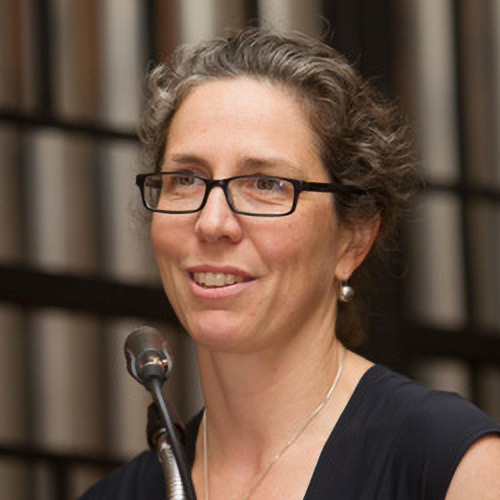How do you define interdisciplinary education?
One where the barriers between the traditional fields have been broken down. So students learn about geology and biology in one class, or history and biology, etc.
How do you describe your teaching “field?” (as in research field)
I guess I’m kind of a hybrid: sometimes I describe myself as an invertebrate paleontologist, sometimes a micropaleontologist, sometimes a Precambrian-Cambrian paleontologist, or a geobiologist. It kind of depends on who I’m talking to.
What creates a successful interdisciplinary education experience?
Well, in a way it’s strange to think this would be challenging because the world is interdisciplinary. It’s hard to understand Earth’s evolution, for example, if you don’t know biology, chemistry, physics, geology, and the story of how scientists figured all of that out (so that brings in not just history but philosophy/evolution of intellectual thought too). So if I’m teaching about plate tectonics for example, it’s a wonderful opportunity to bring in WWII history, paleontology, paleoclimate (reconstructing ancient glaciers), magnets, volcanoes, earthquakes, maps/geography… it’s so rich! It’s hard to imagine how you could teach that without being interdisciplinary.
I try to weave in stories with my teaching to make the subject more memorable. When I teach about the origin of life and chirality of amino acids, for example, I talk about the molecule thalidomide which can either treat morning sickness or cause birth defects, depending on the handedness of the isomer - and mention the woman who worked for the FDA who pretty much single handedly prevented introduction of that drug into the US market, despite enormous pressure. It’s a bit of a tangent, and maybe not that interdisciplinary, but I think at least it ties the subject to things a student can understand and even brings in some inspiring heroism.
Why do you believe the history of science is important to teach?
For at least three reasons (off the top of my head):
1) This is critical for students to understand the nature of science–that we never reach the Truth, but are always iterating toward it (and even sometimes retreating from it only to move back toward it later). If you learn about how our predecessors struggled to figure things out – how far off they were sometimes, but how brilliant they were in other ways – its hard not to realize we are the same and that there’s much that we don’t know that future scientists will be shocked we missed.
2) Talking about the history of science means you are talking about the observations and the logic that previous scientists used to convince themselves and other scientists of a particular hypothesis or theory – which means you are also laying those out for the student. Rather than just telling students about the extent of glaciers during the last glaciation, it’s so much more interesting and useful and memorable to talk about how Agassiz, who spent his youth hiking in the Swiss Alps, figured out that glaciers must have been much more extensive in Europe long ago.
3) It’s so easy to get the impression as a student that everything has already been figured out and there’s nothing new to discover. Learning about the breakthroughs that have happened in the past – including just the past 20 years (since I left grad school) is pretty inspiring – you realize that discoveries and breakthroughs are always happening and will continue to happen.
Do you feel that Earth Sci/STEM in general does a good enough job at interdisciplinary education?
I think Earth Science tends to be a very interdisciplinary branch of science. The range of subjects that our course offerings touch on is pretty impressive. I don’t have the knowledge to comment on other STEM disciplines at UCSB.
I’ve never come out and acknowledged this fact; I assume most people know this is true. What I do try to do is move away from the ‘hero worship’ style of talking about the history of science. I guess you can’t get away from mentioning Darwin, or mentioning other names when you talk about the history of science, but there’s a way to do it that doesn’t put the person up on a pedestal. I used to put photos of the scientists in my lectures, but then I thought, who cares what they look like? And if you have photos, then it means that students keep getting bombarded with the subtle message that science is done by white men. I also think you can avoid focusing on the names of the scientists – or at least their typically gender-specific first names, because, again, who cares what their gender is. I figure that who the scientists are is not really what’s important (and some of them were scoundrels in other aspects of life, so definitely not deserving of hero-worship). It’s their ideas, their observations, and their arguments that are important. I try to focus on those. The other thing I worry about is giving students the impression that everything was in mass confusion until one single person came along and saved the day with their brilliant insight. Science is a community effort, so to the extent I can make that clear by bring in the work of lots of different scientists (whose names the students will forget, but that’s fine – that’s kind of the point) – then all the better.
